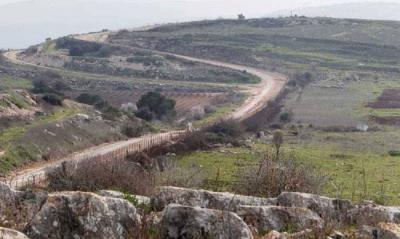Behind the dust of the surprise operation that turned Israel's agreement with Hamas on the ceasefire proposal in Gaza into a cover, old - yet new - fears emerged but have become more serious. This concerns the behavior of Prime Minister Benjamin Netanyahu, who deliberately planted landmines in the final meters of the truce negotiations for Gaza, suggesting a non-surprising strategy aimed at buying more time and prolonging the war until the storm of the American presidential elections next fall passes—hoping that the winds will favor him and return Donald Trump to the White House, rescuing his political fate, as noted in the Kuwaiti "Al-Rai."
While Tel Aviv hinted that the night of seizing the Rafah crossing is in the context of a deceptive simulation, mirroring the trick that Hamas supposedly set by agreeing to a diluted version of the ceasefire proposal, concerned parties in Lebanon busied themselves dismantling the dimensions of Netanyahu's push and trying to sense its implications and repercussions in the near and distant future on the front where confrontations have intensified over the past two days, indicating a dynamic escalation in preparation for a greater event.
Regardless of the outcome of the negotiations by fire that Israel will continue through its delegation to Egypt, threatening Hamas at the same time that any calm would merely be a pause to complete its objective of destroying the movement, a new assessment has emerged in the backgrounds of those knowledgeable of the hidden aspects of the southern Lebanese front and its possibilities. This was dictated by Netanyahu's move, even if it made the first stage of the Rafah operation resemble a carrot-and-stick approach to pressure Hamas into reviewing the terms of the agreement at the negotiating table, which Tel Aviv and Hamas have not left, reflecting Hamas's entrapment—that the residents of Gaza could not rejoice in their acceptance of the ceasefire.
After months spent in a safe zone based on the premise that Israel would not venture into southern Lebanon beyond the operations ongoing since October 8, which have deepened proportionally on both sides without deviating from the context of discipline under the roof of not wanting a large-scale war, "Al-Rai" learned that the resistance axis has again adjusted this reading to align with the meanings of Netanyahu's military landing behind the supposed ceasefire lines, and the threads being woven carefully with close American coordination.
According to the updated assessment within the resistance axis, days of combat or limited Israeli incursions are no longer ruled out, whether after exhausting the effects of the war of attrition in Rafah or during it, as part of a kind of race for alternation or transfer between increasingly heated fronts, leading to an autumn that Netanyahu looks forward to as a chance to renew his political spring.
This reading from the heart of the fire in Rafah intensifies fears about what will happen in Lebanon, which saw a new round of intense confrontations yesterday in which Hezbollah sent messages that it is ready for all possibilities and that its preparations are complete for any reckless step from Netanyahu.




